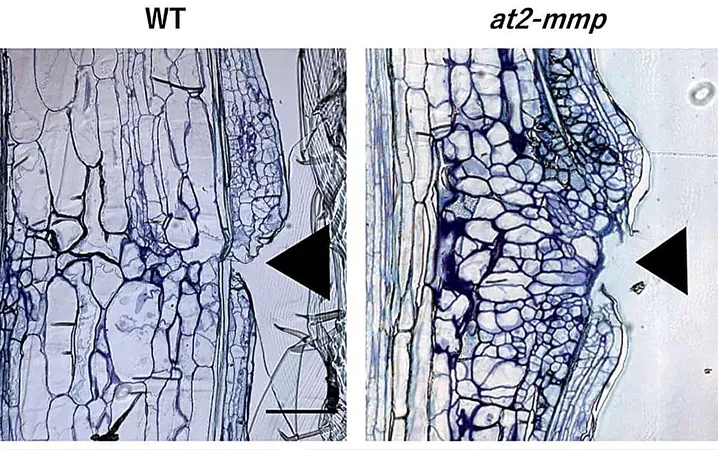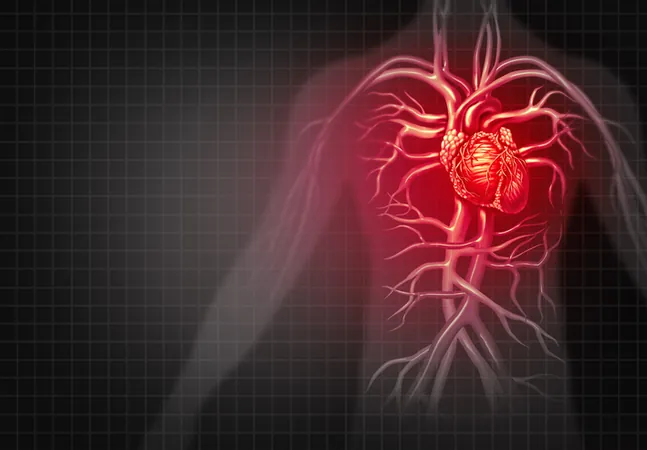
Unveiling the Secrets of Plant Self-Healing: How Cells Regenerate After Injury!
2024-09-27
Author: Nur
Introduction
When a plant's stem sustains damage, an incredible natural process kicks in that allows the surrounding cells to rush in, proliferate, and work together to repair and fuse the wounded tissue, ultimately restoring the plant's functionality. This remarkable self-healing ability is not only fascinating but is also harnessed in grafting techniques that enable the propagation of various fruit and vegetable plants.
New Breakthrough in Plant Regeneration Research
While previous studies have mainly focused on how cell proliferation is initiated following an injury, a new breakthrough research paper reveals significant insights into the mechanisms that actually inhibit this proliferation—acting as a crucial regulatory brake during the healing process.
Role of At2-MMP in Healing Process
In a groundbreaking study involving *Arabidopsis thaliana*, researchers discovered that the proteolytic enzyme At2-MMP plays a critical role in controlling cell proliferation when healing severed flowering stems. Published in the esteemed journal *Plant and Cell Physiology*, these findings are set to reshape our understanding of plant regeneration.
Experiments with Arabidopsis Mutants
By conducting experiments with *Arabidopsis* mutants that lack the At2-MMP gene (known as mutant at2-mmp), scientists compared their tissue repair abilities with those of wild-type plants. Surprisingly, the mutants demonstrated excessive and abnormal cell proliferation at the site of injury, suggesting that the regulatory role of At2-MMP is vital for maintaining normal healing processes.
Timing of Cell Proliferation
In wild-type plants, cell proliferation in response to a severed flowering stem initiates in the pith cells—the central region of the stem—around three days post-injury. Researchers tracked the expression of At2-MMP transcripts, which were found to increase steadily from day zero after injury to day five, before tapering off by day seven, coinciding with the completion of tissue repair.
Imaging Analysis of Cell Behavior
Remarkably, imaging analysis highlighted the stark contrast between the wild-type and the at2-mmp mutants. While normal wound healing and regular cell division were observed in the wild-type plants, the mutants exhibited chaotic and abnormal cell behavior, indicating that the balanced regulation provided by At2-MMP is essential.
Restoration of Normal Healing
Furthermore, by artificially overexpressing At2-MMP in the mutants, researchers were able to restore the normal healing process, resembling that of wild-type plants. This discovery suggests not only a sophisticated internal regulatory mechanism at play during plant injury responses but also potential applications for agricultural practices.
Implications for Agriculture
Understanding how plants regulate cell proliferation during healing opens up exciting avenues for enhancing crop resilience and longevity. This powerful mechanism could lead to innovative agricultural techniques that leverage plant self-healing abilities, potentially revolutionizing the way we grow and sustain our crops.
Conclusion
Stay tuned as science continues to peel back the layers of plant biology, revealing more about the extraordinary capabilities of nature!


 Brasil (PT)
Brasil (PT)
 Canada (EN)
Canada (EN)
 Chile (ES)
Chile (ES)
 España (ES)
España (ES)
 France (FR)
France (FR)
 Hong Kong (EN)
Hong Kong (EN)
 Italia (IT)
Italia (IT)
 日本 (JA)
日本 (JA)
 Magyarország (HU)
Magyarország (HU)
 Norge (NO)
Norge (NO)
 Polska (PL)
Polska (PL)
 Schweiz (DE)
Schweiz (DE)
 Singapore (EN)
Singapore (EN)
 Sverige (SV)
Sverige (SV)
 Suomi (FI)
Suomi (FI)
 Türkiye (TR)
Türkiye (TR)